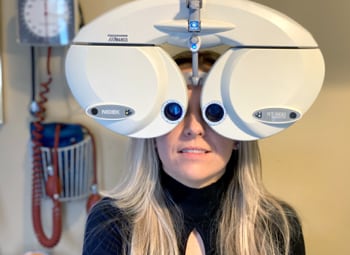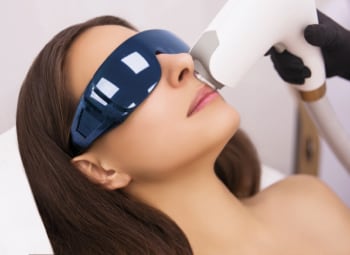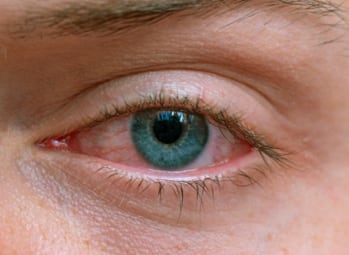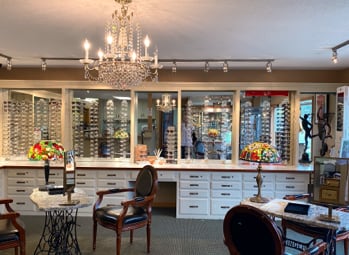
Preserve Your Vision & Quality of Life
Care, knowledge, skills, and service—these are the pillars that support our eye care team every single day. On these pillars, we provide full-scope optometry services for every member of your family.
Our health-focused practices, paired with our extensive selection of state-of-the-art technology, help us take a deep look into the complex systems that make up your eyes, allowing us to address potential problems before they permanently affect your vision.
It all starts when you book an appointment. Schedule yours today.
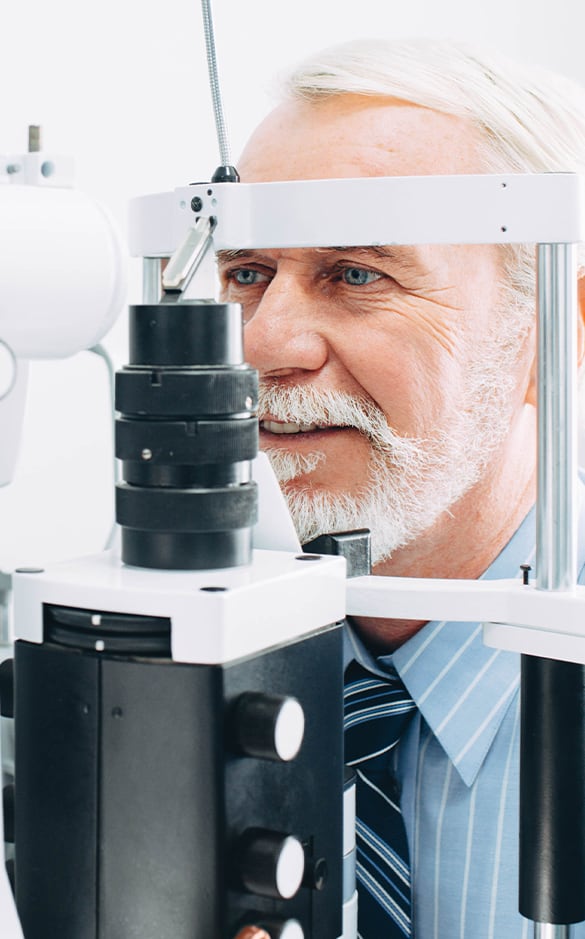
Eye Exams Determine More Than Your Lens Prescription
Your eyes are complex, delicate, and unique, and they deserve comprehensive care to help keep them healthy throughout your life.
Eye exams are the cornerstone of all eye care, and they help our team look at the various systems that work together to provide your sight. Examining your retina, macula, optic nerve, intraocular pressure, and other structures can help detect signs of various eye diseases, some of which could lead to permanent vision loss.
The risk of developing an eye disease is different for every person, but having an eye exam can help determine your risk. Then, we can create strategies for managing your eye health.

State-of-the-Art Technology
Higgins Brothers’ Vision Care is committed to using the latest optometric technology available.
Our years of eye care experience, coupled with the powerful tech we have at our practice, can help you better understand what your eyes need to stay healthy. Each device we use is comfortable and comprehensive, keeping you at ease throughout the entire exam.
Each device observes or measures a different aspect of your eye, allowing us to detect various diseases or conditions. If we notice an issue, we can develop a strategy to help preserve your sight.
Optical Coherence Tomography
Optical coherence tomography is a noninvasive imaging technology that generates cross-sectional pictures of your retina.
By looking at the different layers of your retina, our team can detect signs of glaucoma, age-related macular degeneration, and various diabetic eye diseases.
Fundus Photography
Fundus photography takes pictures of the fundus, the area at the back of the eye. The area includes the retina, macula, and optic nerve.
Fundus images can help our team detect signs of glaucoma, age-related macular degeneration, and diabetic eye diseases.
Tonometry
Tonometry is a technique that measures your intraocular pressure (IOP) levels.
High IOP is a common sign of glaucoma, one of the most common eye diseases adults can develop. We offer several different tonometer technologies to get the most accurate measurements possible.
These technologies include:

Common Eye Diseases & Conditions
Our technologies help us detect even the slightest eye problem signs. Some diseases can develop as you age, while others may develop if you have a health condition like diabetes. Some diseases can even develop without noticeable symptoms—by the time you notice something wrong with your vision, the disease may have already permanently affected your eyes.
No matter your risk, it’s our mission to help you preserve your eyes and vision. Our team is ready to help you enjoy healthy, clear vision—all you have to do is contact us to book an appointment.
Glaucoma
Glaucoma is a group of diseases that affect your optic nerve. Your optic nerve is responsible for transporting the information your retina collects to your brain, providing you with sight. Glaucoma can slowly damage the optic nerve, leading to permanent vision loss.
Most types of glaucoma occur when your intraocular pressure (IOP) rises over time. However, other types of glaucoma can develop even when your IOP levels are within normal limits. We can detect glaucoma during an eye exam by observing your optic nerve or measuring your IOP levels.
Open-Angle Glaucoma
Open-angle glaucoma is the most common version of the disease.
You can develop open-angle glaucoma when blockages form in your eye’s natural drainage system, which can raise your IOP levels over time. As your IOP rises, it can place pressure on your optic nerve, leading to possible vision loss.
Angle-Closure Glaucoma
Angle-closure glaucoma occurs when the drainage angle in your eye closes, causing your IOP levels to rise rapidly.
You may experience several sudden symptoms, like eye pain, redness, nausea, blurry vision, and sudden vision loss. Angle-closure glaucoma requires emergency care, so please call our team immediately if you notice these symptoms.
Normal-Tension Glaucoma
Normal-tension glaucoma can develop even when your IOP levels are within normal limits.
The cause of this disease is unknown, but observing your optic nerve during an eye exam can help our team detect it.
Age-Related Macular Degeneration
Age-related macular degeneration (AMD) is a common eye disease many people develop as they age. In fact, AMD is considered a leading cause of vision loss in adults over 50.
AMD affects a part of your eye called the macula, which provides the central vision you need to drive, read, and see fine details.
There are 2 different types of AMD, which can lead to possible vision loss. Observing your macula during an eye exam can help our team detect this disease.
Dry AMD
Dry AMD occurs when your macula thins as you age.
Doctors aren’t sure how this may develop, but some research has shown that a lipid called drusen can form under your macula as you age. Over time, the drusen can deteriorate your macula and lead to vision problems.
Wet AMD
Wet AMD develops when blood vessels under that macula break and leak fluid. The fluid can swell the macula, leading to sudden symptoms like poor night vision, reduced color vibrancy, and blurry central vision.
Wet AMD is an emergency issue that requires immediate attention.
Diabetic Eye Disease
Diabetes increases the risk of several health problems, including a variety of eye diseases, like diabetic retinopathy and diabetic macular edema.
Diabetes can also increase the risk of open-angle glaucoma and cataracts.
Please visit our Diabetic Eye Exams page to learn more about how diabetes can affect your eyes.
Dry Eye Syndrome
Dry eye is an irritating, uncomfortable eye condition that could lead to further issues like corneal scarring and eye infections.
As Connecticut’s leading Dry Eye Center, we offer several techniques to relieve dry eyes and get you back to enjoying your sight.
Please visit our Dry Eye Center page for more information.
Cataracts
Cataracts are a common eye condition that can develop with age. Most people develop some degree of cataracts throughout their lives, but it could cause blindness if it’s not treated.
As you grow older, proteins in your crystalline lens can break down and clump together, making the lens more rigid. Your lens can also develop a hazy, milky, cloudy appearance that can distort or obstruct your vision over time.
Glasses and contact lenses can help correct early cataract-related vision problems. If your symptoms progress far enough, we may recommend cataract surgery, which replaces your crystalline lens with an artificial intraocular lens.
Healthy Sight Supports a Happy Life
Quality vision depends on quality eye care. Choose Higgins Brothers’ Vision Care and get the help you need to preserve your crisp, clear sight.
Book your appointment today.

Our Location
Conveniently located a short drive from the I-72 on East Main Street and Crown Street. You’ll recognize our inviting building immediately—it looks like a cozy home.
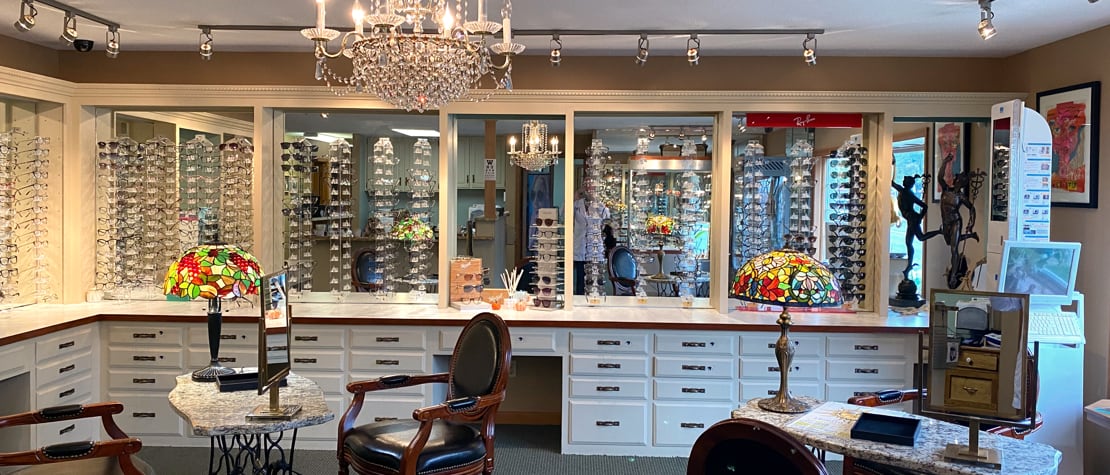
Our Address
- 74 E Main St
- Plainville, CT 06062
Contact Information
- Phone: 860-793-9613
- Email: [email protected]
In case of an eye emergency call Dr. Higgins at (860)729-4083.
Hours Of Operation
- Monday: 9:00 AM – 5:30 PM
- Tuesday: 9:00 AM – 5:30 PM
- Wednesday: 9:00 AM – 12:00 PM
- Thursday: 9:00 AM – 5:30 PM
- Friday: 9:00 AM – 12:00 PM
- Saturday: Closed
- Sunday: Closed





